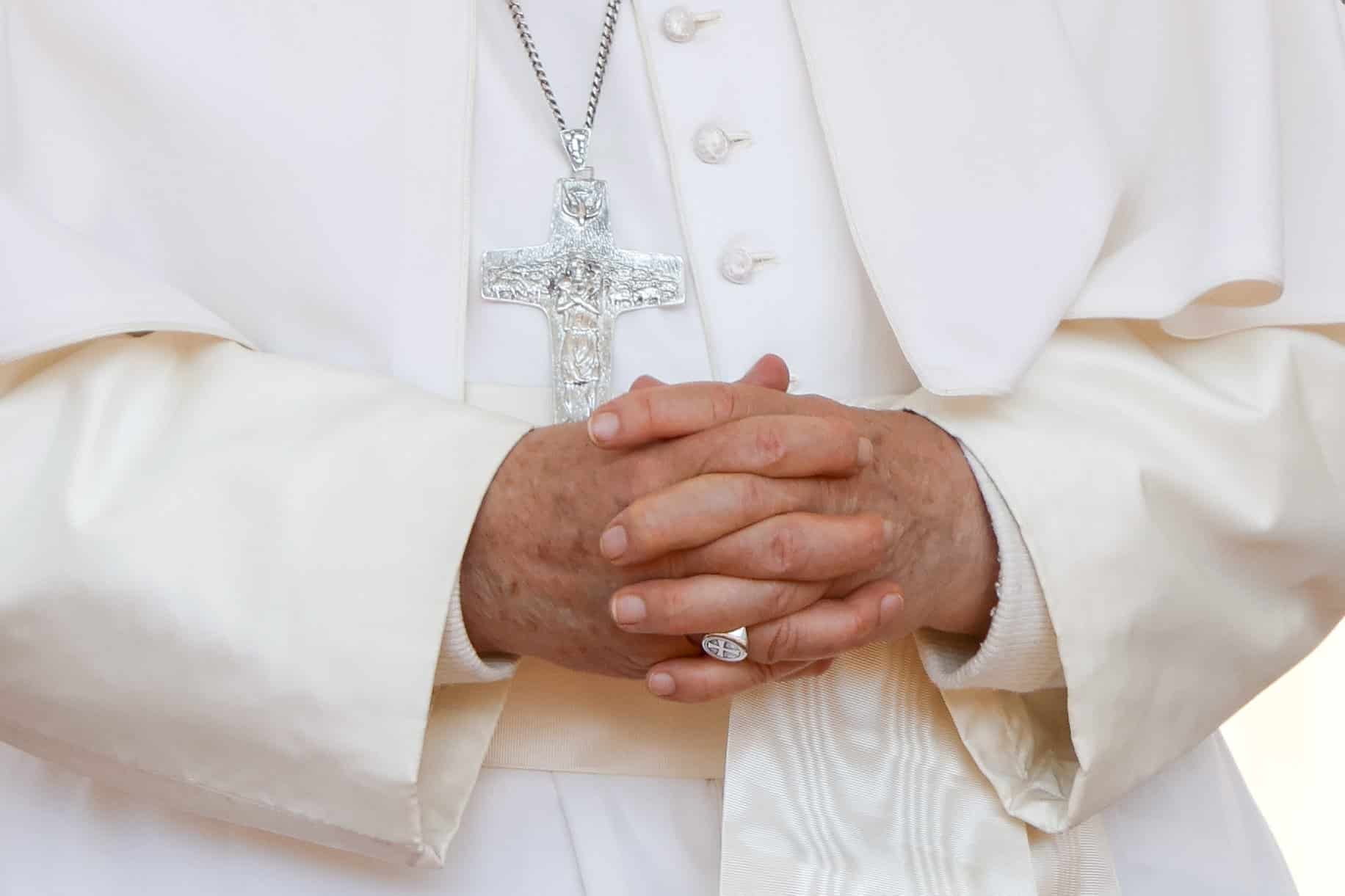In January, Vice President JD Vance was in the news regarding his interpretation of St. Augustine of Hippo’s expression ordo amoris (order of love or hierarchy of love). That expression appears in the saint’s book City of God. On February 10, Pope Francis sent a letter to the bishops of the United States about the treatment of immigrants. Can you explain what is going on?
Victoria Moorwood reported in USA Today that in a January 29 interview with Fox News, Vance said: “There’s this old school—and I think it’s a very Christian concept, by the way—that you love your family, and then you love your neighbor, and then you love your community, and then you love your fellow citizens in your own country, and then, after that, you can focus and prioritize the rest of the world.
“A lot of the far left has completely inverted that. They seem to hate the citizens of their own country and care more about people outside their own borders.”
In his letter to the US bishops, Pope Francis wrote, “Jesus Christ, loving everyone with a universal love, educates us in the permanent recognition of the dignity of every human being, without exception.” He later noted that he had been following closely “the major crisis that is taking place in the United States with the initiation of a program of mass deportations.”
Referencing his 2020 encyclical Fratelli Tutti (On Fraternity and Social Friendship), Pope Francis continued, “The true ordo amoris that must be promoted is that which we discover by meditating constantly on the parable of the good Samaritan (cf. Lk 10:25–37), that is, by meditating on the love that builds a fraternity open to all, without exception.” The text of the pope’s letter can be found in the 2025 papal letters section at Vatican.va.
Yes, there is a hierarchy of love, but it begins not with loving your family but first with loving God—and by extension—all those people made in the divine image and likeness. I’m afraid that Vance’s understanding of ordo amoris would nullify not only the good Samaritan parable but also Jesus’ story about those who are condemned for not feeding the hungry (Mt 25:42–46) and the rich man’s indifference to the sufferings of Lazarus (Lk 16:20–25). It would also justify the Pharisee’s contempt for the tax collector praying at the back of the Temple (Lk 18:9–14).
Augustine’s City of God sharply contrasts God’s values (completely normal in heaven) with the values unfortunately commonly accepted then and now in the earthly city. Would Augustine recognize Vance’s interpretation of ordo amoris? I strongly doubt it. They could perhaps discuss it at the eternal banquet.
How Did the Rosary Develop?
I have read different explanations about the origin of the rosary. What’s yours?
The Hebrew Bible has 150 psalms. Some Christians began to pray 150 Our Fathers, later switching to 150 Hail Marys, organized into the joyful, sorrowful, and glorious mysteries. In 2002, St. John Paul II added the luminous mysteries (Jesus’ Baptism in the Jordan, the wedding feast of Cana, proclamation of the kingdom of God, the Transfiguration, and the institution of the Eucharist). Because the rosary is a form of private prayer (no matter how many people join in at the same time), such adaptation is perfectly legitimate.
Which Direction Should a Church Face?
Why do Catholics no longer face east when celebrating the Eucharist? Who authorized that change and why?
Unfortunately, people sometimes oversimplify history. In fact, not all Catholic churches have ever been built on an east/west axis. Rome’s Vatican basilica, built in the fourth century by Emperor Constantine and then torn down and rebuilt under several popes in the 15th and 16th centuries, is on a slight southwest/northeast axis.
At a morning canonization, Mass is celebrated in St. Peter’s Square. The extraordinary ministers of the holy Communion, bishops, and cardinals sit on the altar’s left side with their backs to the rising sun. Diplomats or other official guests sit on the right side, facing the rising sun. I have been on the left side at such a Mass.
Also, Rome’s Christian catacombs of Priscilla, Domitilla and Marcellinus, and Peter all include frescoes depicting the celebration of the Eucharist. In them a presider and other ministers face viewers and presumably other Christians present at the same celebration.
The Missal of the Council of Trent allowed Masses ad orientem (to the east) or else facing the people. After Vatican II, many altars attached to a wall were moved forward, or a freestanding altar was placed between the back wall and the people, enabling the presider to face the congregation, which had been impossible in most churches. An Internet search for “Mass ad orientem” and “history” yields a lengthy and interesting article on this subject.
The practice in some Roman Catholic churches to face ad orientem is not the ancient and universal custom that many of its promoters think it is.
Muslim mosques have a niche (mihrab) indicating the direction of Mecca’s Kaaba (their holiest shrine), and that is the direction that Muslims face when praying.
Will God Wipe Out the Human Family?
The way things are going today, I have to ask: Will God destroy the human family?
No, but we may wipe ourselves out. After Noah and the ark survived the flood, Noah offered a sacrifice to God. Genesis 8:21b tells us that the Lord said in his heart, “Never again will I curse the ground because of human beings, since the desires of the human heart are evil from youth; nor will I ever again strike down every living being, as I have done.”








